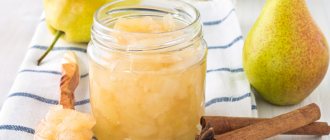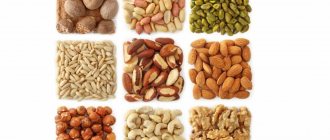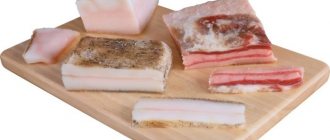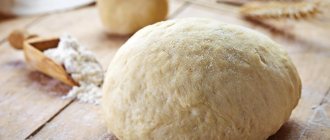It is believed that bread makes you fat, so those who want to lose weight try to limit their consumption. However, according to nutritionists, people mainly gain weight not from baked goods, but from their improper use. You need to figure out what kind of bread does not make you fat, and how to eat it correctly so as not to gain weight.
Why do people get better from bread?
It’s worth clarifying right away that people get better not from any bread, but from the specific type of cereal that is used in its preparation. We are talking about wheat, the main disadvantage of which proponents of a healthy lifestyle call the presence of gluten.
This type of protein provokes a sharp increase in blood sugar, overloads the immune system, and does not allow micronutrients and minerals to be properly absorbed. It is called responsible for obesity, allergies, the development of heart disease and disruption of the gastrointestinal tract.
However, this was not always the case. Even at the beginning of the last century, wheat bread did not have so many shortcomings. The fact is that in the 50s of the 20th century, breeding scientists began to actively develop new types of wheat, with increased immunity to diseases, drought resistance, frost resistance and high growth rates.
Modern types meet all these requirements. However, one of the consequences of the crossings was a mutation of the protein - gluten, which in its current state is practically not digestible, since the human body simply does not have the necessary enzymes for this.
Important! Nutritionists have noticed that baked goods with the same calorie content have different effects on weight gain. Bread made from wheat flour promotes weight gain, while, for example, bread made from oatmeal has virtually no effect on overall weight. Over time, scientists have discovered that gluten disrupts the endocrine system, disrupting carbohydrate-cholesterol metabolism and inhibiting the recovery of liver cells.
The second reason that leads to excess weight gain when eating bread is additional products. Often bread is not eaten in its pure form, but as a basis for sandwiches, generously using high-calorie sauces, various types of butter, sausages and fatty cheeses.
This combination of products is a real blow to the figure, provoking not only an increase in adipose tissue, but also the production of large amounts of insulin, which is responsible for the feeling of hunger. The result is that even despite a very high-calorie snack, a person does not feel full. Moreover, after a short time he will feel hungry again.
The third reason why bread makes you fat is the amount of it. According to nutritionists, the optimal daily intake of bread is 120-150 grams. This means that you can eat no more than 4-5 medium-sized pieces per day.
Be sure to check out:
Distribution of bread
What kind of bread to eat when losing weight? Recommended varieties:
- whole grain (that is, made from whole grains without flour);
- bran (bran, for those who don’t know, is the very removed shell of the grain);
- rye-wheat;
- rye.
If you don’t need to lose weight, but have a sedentary job, then 200-300 g of bread a day is just what the doctor ordered. For those losing weight, 200 g is good, and for obese people, 100 g is enough.
Tatyana Kuznetsova Consultants: Olga Zaikina, Candidate of Biological Sciences, biologist-nutritionist; Maria KLEVETS, Candidate of Technical Sciences, Associate Professor of the Department of “Technology of Baking and Pasta Production” MSUPP
What kind of bread can you eat while losing weight?
The highest calorie bread is made from premium white wheat flour. This flour contains a lot of starch, a minimal supply of nutrients, and synthetic vitamins. The snow-white color indicates that the product has undergone a bleaching procedure to give it a marketable appearance (natural flour is not white). The calorie content of this type of bread is 260-270 kcal.
Rye is considered more dietary due to its 245-250 kcal value, as well as its higher fiber content. Its main disadvantage is poor digestibility. It is not recommended for use by people with gastrointestinal problems.
Oatmeal bread contains only 225 kcal. However, the main benefit of oatmeal lies in its ability to remove excess water, toxins and waste from the body. In addition, it can prolong the feeling of fullness, which is very important for those losing weight.
Corn bread has more calories (260 kcal) than oat bread, but is no less healthy. It has a unique vitamin and mineral composition, improves peristalsis, reduces the level of “bad” cholesterol and has a positive effect on the functioning of the cardiovascular system.
Whole grain bread is considered the healthiest and lowest in calories. It is distinguished by the highest content of healthy fiber, which takes the longest to digest in the stomach, its ability to clean blood vessels (remove cholesterol) and excellent mineral composition. Regular consumption of baked goods made from whole grain flour can improve peristalsis and reduce the risk of developing cancer.
Whole grain product is contraindicated for ulcers, cholecystitis, pancreatitis and acute gastritis, as it increases the acidity of gastric juice.
These are not the only types of bread that can be consumed during the diet. Nutritionists recommend paying attention to simple baked goods made from buckwheat, spelled, coconut, pumpkin and flaxseed flour.
Another difference between dietary bread is the absence of yeast in its composition. Thanks to this, fermentation processes are not provoked in the gastric environment, and bread can be introduced into the diet even of people with gastritis and high acidity.
Calorie content of bread
You can prevent excess weight gain by eating bread instead of bread. Their calorie content is higher than that of bread, about 300-320 kcal, but they do not contain flour, sugar, butter, salt, etc. However, not all breads are healthy.
Proper bread is made from cereal grains, like popcorn. The grains are softened in water and then subjected to high pressure and temperature in a special apparatus - an extruder. Water boils inside the grain, steam, coming out, expands the contents of the seed. Under pressure, the grains stick together into briquettes. These breads are crunchy. They do not contain any harmful additives, and the content of fiber, amino acids, microelements, and vitamins, on the contrary, is high.
There is another way to prepare bread. They resemble thin crackers in appearance. The dough for them is kneaded using flour and yeast; the manufacturer can add milk, sugar, and preservatives. The dough is rolled out thinly and baked into plates. Then they are cut into small pieces and packaged.
Those who are concerned about whether it is possible to gain weight from bread should carefully study the composition of the product. If the packaging states that the bread contains yeast and flour, it is better to refuse such a purchase; such a product will definitely not be beneficial for your figure.
Recipes for dietary bread products
Most recipes for dietary bread and pastries do not contain special or any exotic ingredients. Most of the ingredients can be found at home or at your local grocery store.
With buckwheat flour
The benefits of buckwheat flour are well known. However, there is another product made from this type of cereal - green buckwheat flour. “Live” greenish grains differ from classic ones in that they are not subjected to heat treatment, which means they retain most of the vitamins and valuable substances.
Green buckwheat contains B vitamins, tocopherol, magnesium, calcium and rutin - an antioxidant necessary for the health of the heart and blood vessels. In Rus', this product has long been called “mulberry”.
| Ingredients | Steps |
|
|
Calorie content – 260 kcal.
Used - 7.4/9.2/36.
Green buckwheat has a pleasant nutty aftertaste.
Comment!
Bread made from this type of flour is recommended for diabetics, as it can quickly lower blood sugar levels.
With bran
Bran is a well-known dietary product that has long been appreciated by nutritionists and adherents of nutritional nutrition. There are several types of bran: corn, wheat, oat. The latter are considered the most useful during the diet and cleansing of the body.
| Ingredients | Steps |
|
|
Calorie content – 184 kcal.
Used – 14/9/10.
To avoid using oil for lubrication, you should use silicone molds.
Rye
There are 4 types of rye flour: pecked, peeled, sifted and wallpaper. For baking bread, the peeled and seeded varieties are most often used, which are highly nutritious and have a sufficient content of coarse fibers.
| Ingredients | Steps |
|
|
Those who do not like the pronounced taste of rye bread can add whole grain corn or wheat flour. This will soften the taste of the product, but at the same time increase its calorie content.
Wholegrain
Whole grain or wallpaper flour is one of the main products of PP baking. It contains little gluten, so it cannot be used to make puff pastry or choux pastry. But whole grain flour can be used to bake healthy and low-calorie bread.
| Ingredients | Steps |
|
|
Calorie content – 268 kcal.
Used – 7/3/40.
You can adjust the taste with the help of spices and dry herbs. Italian herbs go especially well with rye dough: basil, oregano, rosemary, marjoram.
Yeast-free
Yeast, as an ingredient, should be excluded from the diet altogether. They not only reduce the digestive function of the intestines, but also prevent the removal of toxins and waste from the body. A healthier and safer sourdough can serve as an analogue of yeast.
| Ingredients | Steps |
|
|
This bread can be stored in the refrigerator for 5-7 days.
Bread
Diet breads can not only keep you feeling full for a long time, but are also very convenient in terms of transportation. You can take them with you on a trip or as a snack to work in the office.
| Ingredients | Steps |
|
|
You can also add fresh herbs to the dough, and replace chicken eggs with a healthier option - quail eggs.
Diet flatbreads
One of the most common options for replacing bread on a diet is dietary flatbread. To prepare a low-calorie analogue, you will need a minimum set of products.
| Ingredients | Steps |
|
|
Some of the bran can be replaced with a healthy type of flour: rye, pumpkin or amaranth. Low-fat cottage cheese, dried seaweed, natural sweeteners, seeds, dried fruits or nuts (in small quantities) are used as additional ingredients.
Pita
Lavash is the simplest baking recipe using flour. The recipe usually consists of 2 ingredients. Lavash, like flatbread, can be used as a base for sandwiches or a snack.
| Ingredients | Steps |
|
|
Advice!
When frying, place the pita breads in one plate and cover them on top with a hot, slightly damp towel.
Bread causes intestinal inflammation
Where did this idea come from? Bread is made from grain, and grain contains gluten, which causes intestinal inflammation - celiac disease.
Like really. What is true is true - grains do indeed contain gluten, the consumption of products with which actually provokes celiac disease in people predisposed to this. But there are very few such people. For you to get celiac disease, you must have two rare genes in your genome. But even if they exist, it is not a fact that you will still get sick - of all carriers of the “unsuccessful” genetic set, less than one percent of people get sick. For all other people, there is no point in being afraid of intestinal inflammation - no matter how much bread you eat, without the “necessary” genes, celiac disease will still not happen.
Main conclusions
There are many analogues that can replace bread in a diet. At the same time, alternative products will not only have a lower calorie content, their consumption will bring tangible benefits to the body.
- Wheat flour with gluten is the main reason why people gain weight.
- Also factors in obesity are uncontrolled consumption of flour products and high-calorie additions to sandwiches and sandwiches.
- Whole grain bread made from peeled flour is considered the healthiest, but it has its own contraindications.
- During the period of weight loss, bread can be replaced with diet flatbreads, crispbread or regular pita bread.
- The recommended consumption rate for flour products is 120-150 grams per day.
It’s quite easy to find an alternative to bread on a diet; it’s even easier to make it yourself. Simple recipes for dietary lavash or flatbreads are easy to implement even for cooks with little culinary experience.
Why the immune system is not friendly with gluten
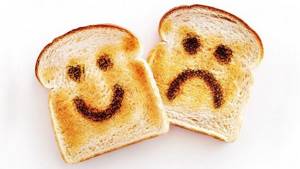
Our body's enzymes are not able to break down gluten into amino acids - small enough elements that can be digested. Gluten breaks down only into peptides (chains of amino acids), but they are too large for normal absorption by the small intestine.

To allow long chains to pass through, the intestinal walls have to open for a long time. Deviation from the norm is not liked by the immune system, and it begins to attack the peptides as foreign bodies. As a result, some people may develop celiac disease , an intolerance to foods containing gluten.




